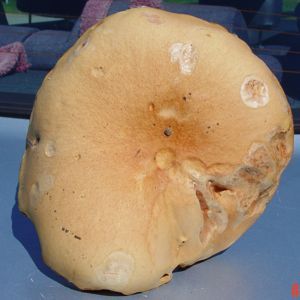
King Bolete
Boletus Edulis
Some
mycologists split the species into B. aereus, B. aestivalis, B.
pinicola, B. reticulatus and true B. edulis
Found this one on 8/8/04 on New England Power land in Westboro, Massachusetts. As far as I could tell it has all the characteristics except too little white reticulation on the upper part of the stem. No bitter taste. Sticky cap when wet. The pores are olive green. The spore print came out olive green to olive brown.
Here is the description:
Cap: 7" diameter
Stem: 5" long
Stem thickness: 1.25 to 1.75 inches
Top view:

Side view as growing:
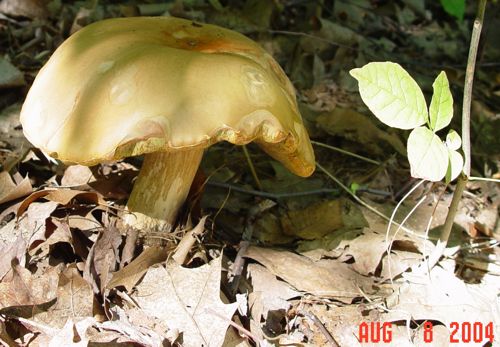
Cap underside and stem showing
reticulation:
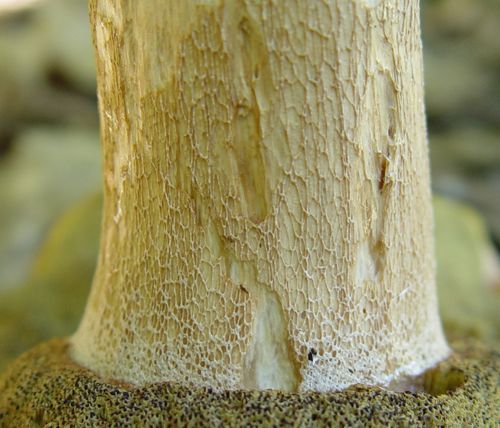
Cap section:

Two inches high in center.
Stalk section:
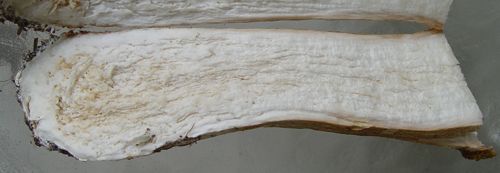
Arkadiy Pitman's message:
Hi, Vlad:
It is NO DOUBT King/ Boletus edulis/ Cep/ Porcini/ "Bely dubovy grib"(in Russsia,
especially in North Caucas).
5-6 days old, grown in far from ideal conditions.
The best culinary recommendation - Soup, it will be delicious.
Best regards, Arkadiy Pitman
PS
You may consider my opinion as a final - I hunted ONLY ceps in 1984-1997 and
mostly ceps in 1980-1983 (Russia, Ukraine, Caucas) and 1998-2003(MA,NH,MN, VT,
CA, NY) This year is not good for ceps. So far I've found just about 50 ceps.
(By this time last year it was between 50 and 70 KG)
Keep in mind - there is always a room for
improvement:
It took me 2 years from my first 'bely grib'(1977) to first 10 per walk(1979),
next 2 years to first full basket( about 3-4 gallons, 1981), next 3 years to my
still best number of ceps per walk (485 at 1984).
I bested my heaviest harvest in one walk (16 KG, 1988) just last summer, when
I've got about 20 KG of ceps in one day [middle to big size, dry weather will
give you 1 Gallon = 1 KG; if you have rain, this is a fall and you collect young
and small ceps, for some kind of ceps it could be up to 1 Gallon= 3.5 KG].
On September 23 I went back to the same spot and found 3 more King Boletes! This was 5 days after a big rainfall on a Saturday. My guess is that they are 8 days old, so they came up before the rain when the ground was pretty dry. It is hard to figure out what mushrooms will do!
Here is King #2 for the year:

Here is King #3 for the year:
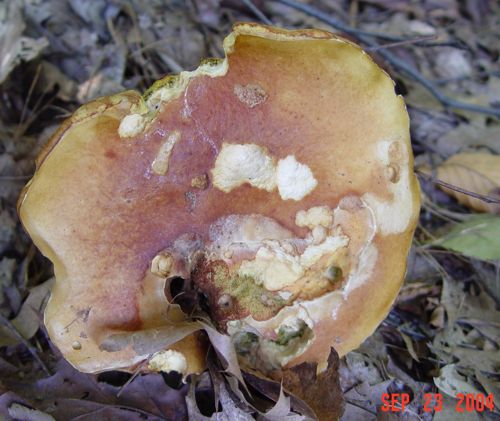
And King #4 for the year.
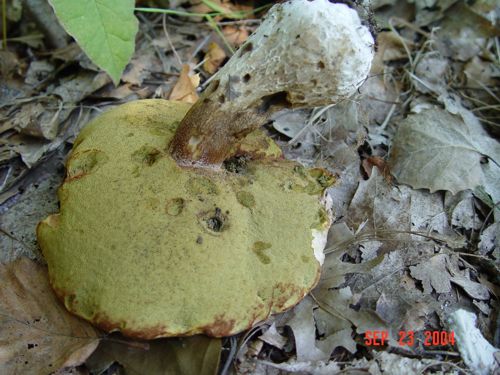
This one was in the best shape but not good enough to eat. I think I might
have one more chance this year. Hope I can get them when they are prime.
On October 4,
while walking Stow Town Forest, Ray spotted a red toped Bolete that turned out
to be King #5.
It had a dark red shinny top that was sticky. It was about 5" in diameter.
The stalk was massive and all white. Could not see any reticulation.
After getting home, and the stem turned a light brown, white reticulation shows
up in the pictures. The flesh in the cap appears to be too thin as
compared to the tubes. Also the reddish brown stain on the section.
Top
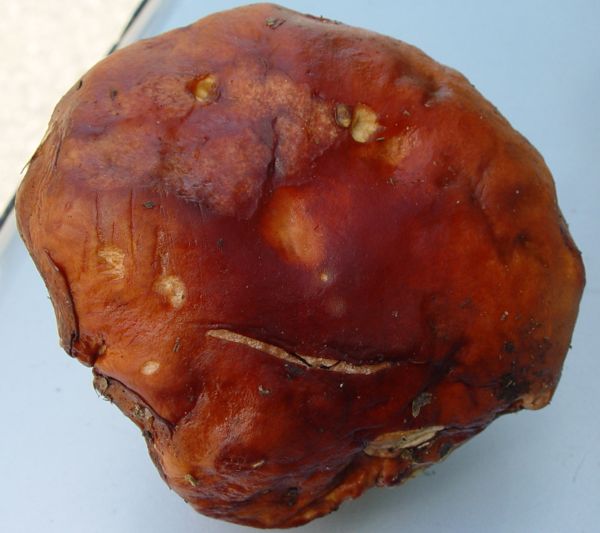
Side

Stem
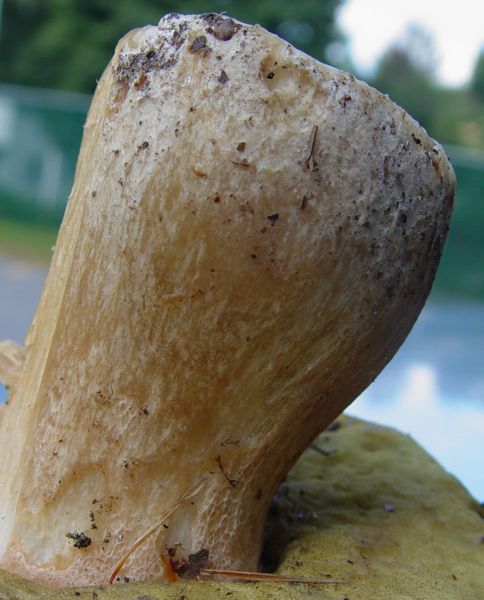
Section
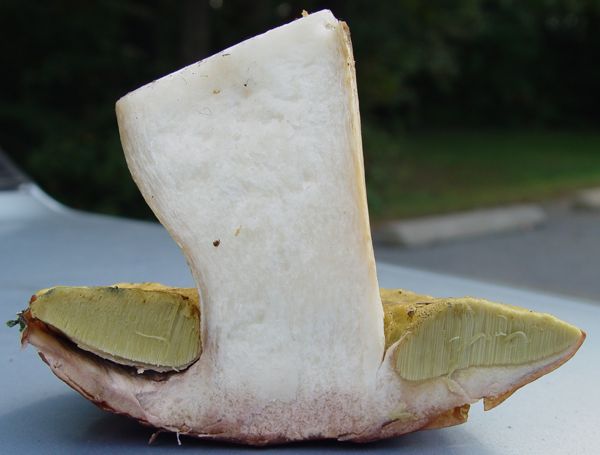
Reticulation
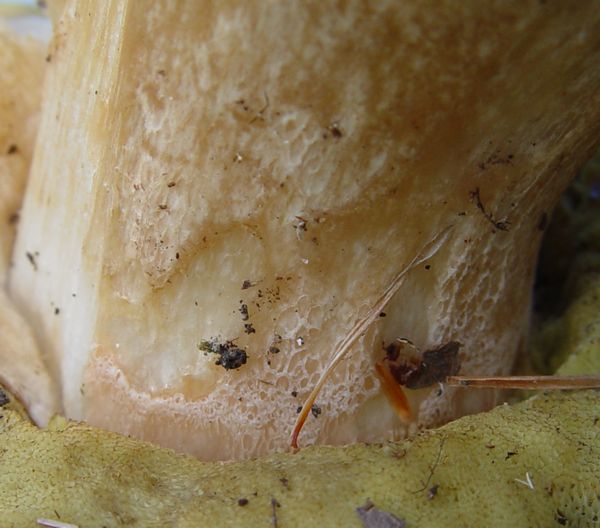
Again Arkadiy Pitman, the King of Kings, confirms my ID. Here is his reply
Yes, it is the king too and even better than first one! There are several kinds of Kings.
The first (by Russian etymology) was "DUBOVY BELY GRIB" (we may translate it as Oak White Mushroom). This one is "SOSNOVY BELY GRIB" (we may translate it as Pine White Mushroom).
The pines are a little different in Russia than in MA (no white pines, of course).
The brown color immediately under cap is caused by pigment in the upper layer of the cap - this pigment is not very strong, sometimes it even could be washed out. This one obviously aged under pretty wet conditions - and too much moisture may create some brown spots even inside the steam (when you cook - you remove them).
Arkadiy